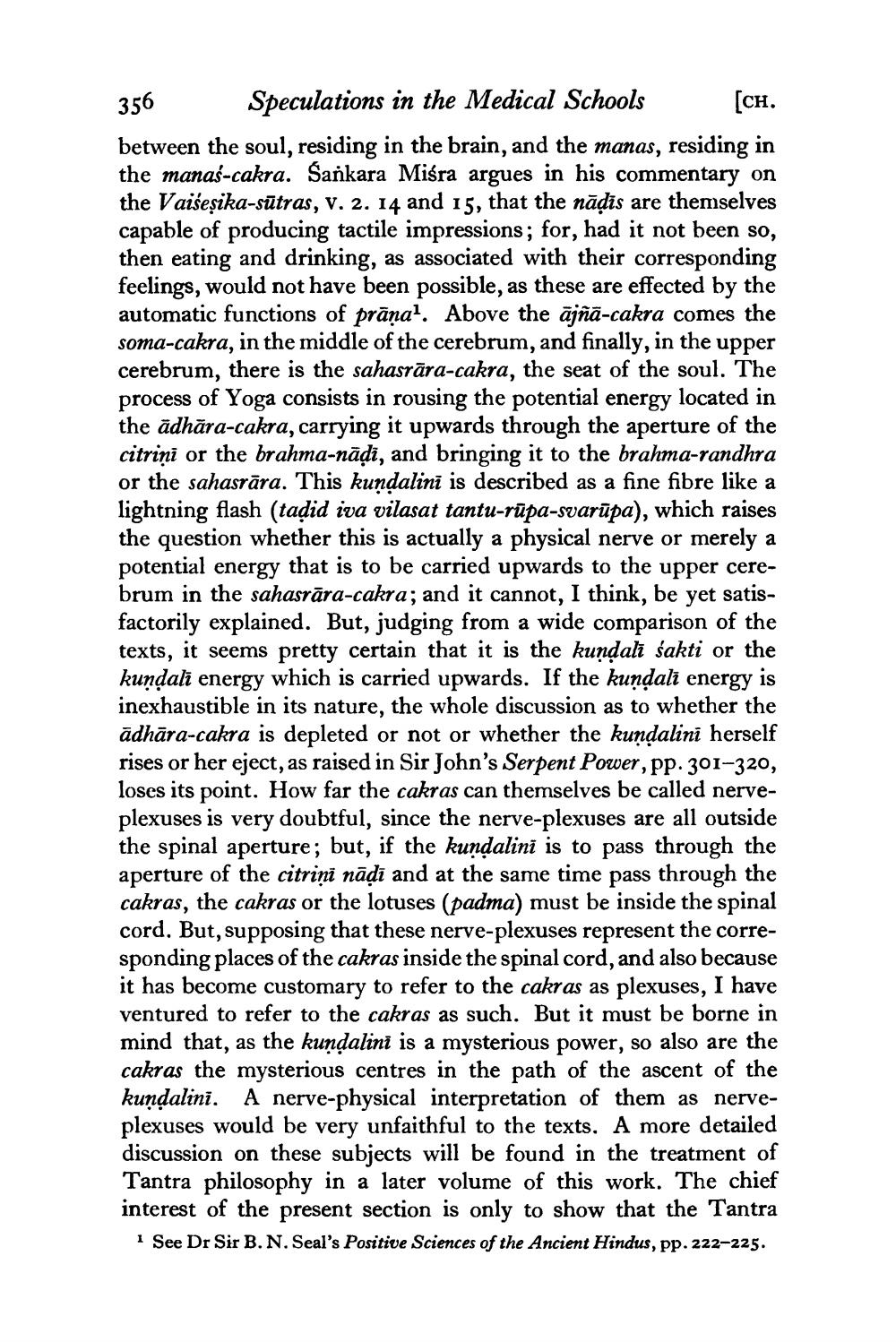________________
356
Speculations in the Medical Schools
[CH.
between the soul, residing in the brain, and the manas, residing in the manas-cakra. Sankara Miśra argues in his commentary on the Vaiseṣika-sutras, V. 2. 14 and 15, that the nāḍīs are themselves capable of producing tactile impressions; for, had it not been so, then eating and drinking, as associated with their corresponding feelings, would not have been possible, as these are effected by the automatic functions of prāṇa1. Above the ājñā-cakra comes the soma-cakra, in the middle of the cerebrum, and finally, in the upper cerebrum, there is the sahasrara-cakra, the seat of the soul. The process of Yoga consists in rousing the potential energy located in the adhara-cakra, carrying it upwards through the aperture of the citrini or the brahma-nādi, and bringing it to the brahma-randhra or the sahasrara. This kundalini is described as a fine fibre like a lightning flash (taḍid iva vilasat tantu-rūpa-svarūpa), which raises the question whether this is actually a physical nerve or merely a potential energy that is to be carried upwards to the upper cerebrum in the sahasrāra-cakra; and it cannot, I think, be yet satisfactorily explained. But, judging from a wide comparison of the texts, it seems pretty certain that it is the kundali sakti or the kundali energy which is carried upwards. If the kundali energy is inexhaustible in its nature, the whole discussion as to whether the ādhāra-cakra is depleted or not or whether the kundalini herself rises or her eject, as raised in Sir John's Serpent Power, pp. 301-320, loses its point. How far the cakras can themselves be called nerveplexuses is very doubtful, since the nerve-plexuses are all outside the spinal aperture; but, if the kundalini is to pass through the aperture of the citriņi nāḍī and at the same time pass through the cakras, the cakras or the lotuses (padma) must be inside the spinal cord. But, supposing that these nerve-plexuses represent the corresponding places of the cakras inside the spinal cord, and also because it has become customary to refer to the cakras as plexuses, I have ventured to refer to the cakras as such. But it must be borne in mind that, as the kundalini is a mysterious power, so also are the cakras the mysterious centres in the path of the ascent of the kundalini. A nerve-physical interpretation of them as nerveplexuses would be very unfaithful to the texts. A more detailed discussion on these subjects will be found in the treatment of Tantra philosophy in a later volume of this work. The chief interest of the present section is only to show that the Tantra 1 See Dr Sir B. N. Seal's Positive Sciences of the Ancient Hindus, pp. 222-225.




